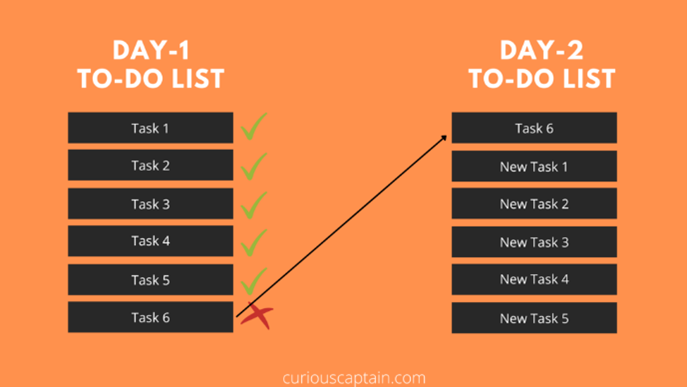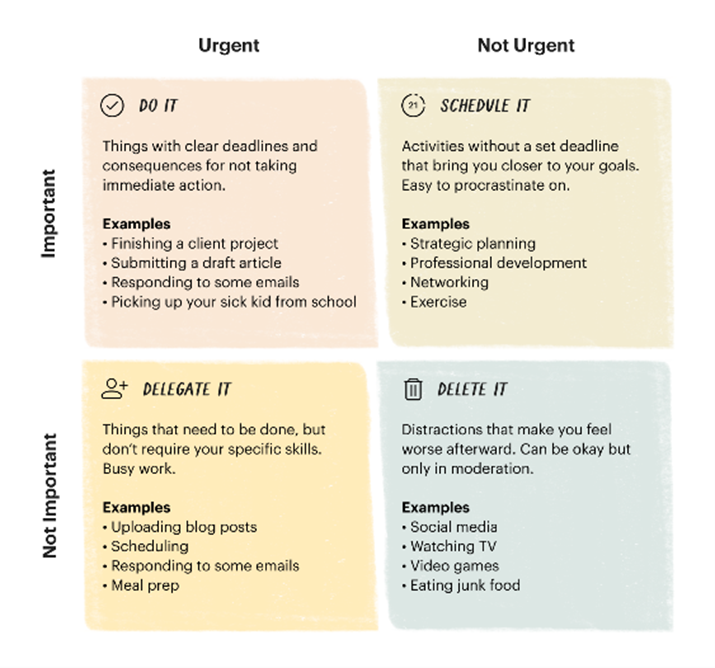Article Summary:
Setting boundaries is one of the hardest things for many people to do but it’s a powerful and empowering personal development practice. And costly if we don’t do it well. This article addresses why it’s hard, its benefits, and how to do it well.
+++
Boundaries are dividing lines that mark the limits of an area. If we pause to notice, we can see boundaries all around us. The boundary of our body. Our apartment walls or home and property line. State and national borders. The boundaries of sports. In soccer, it’s sidelines, penalty areas, goals, and goal posts. With basketball, it’s sidelines, free-throw lines, three-point lines, and more. In track and field, it’s running lanes. And in many sports, the clock serves as a time boundary, delineating quarters, periods, or halves, and perhaps overtime.
In life, setting boundaries is about identifying ways for others to behave towards us—and also setting lines for ourselves that we resolve not to cross. Our personal boundaries set a limit on what we’ll accept or tolerate.
We need boundaries to function effectively in and enjoy our life and work. They’re there for our protection and wellbeing, and they can give us a sense of control over our lives.
The Problem with Not Having Boundaries
Lack of boundaries can lead to many negative consequences, including:
- negative emotions like anxiety, frustration, resentment
- overcommitment and a sense of “time poverty” (“the chronic feeling of having too many things to do and not enough time to do them”)
- overwork or workaholism
- exhaustion and burnout
- numbing behaviors (escaping from our thoughts and feelings by doing other things like shopping, eating, binge watching, or doom scrolling)
“When we fail to set boundaries and hold people accountable, we feel used and mistreated.”
-Brené Brown, researcher and author
Boundary Types and Examples
To understand boundaries, it helps to consider their different types and see examples of them in action. There are many different types of boundaries, including:
- Physical boundaries (e.g., whether we hug or shake hands with people we meet, what we do with our bodies, who we allow into our personal space and under what conditions)
- Emotional boundaries (e.g., whether we take on other people’s emotional burdens or allow their moods to change ours)
- Relationship boundaries (e.g., how we let others talk to or treat us, such as whether we tolerate disrespect, dishonesty, wasting our time, belittling, bullying, etc.)
- Privacy boundaries (e.g., deciding what personal information we choose to share and with whom, when, and where)
- Conversational boundaries (e.g., whether there are topics—like politics and religion—we choose not to discuss with certain people or in certain circumstances because they may be awkward, painful, volatile, or triggering)
- Work boundaries (e.g., whether we allow ourselves to get overcommitted, whether we take on the workloads of colleagues who are slacking, whether we work on weekends or check email on vacation)
- Self-care boundaries (e.g., whether we have good sleeping, eating, and exercise habits, whether we check our phones first thing in the morning and/or last thing before bed, how much time we spend on our devices)
- Ethical boundaries (e.g., whether we harm, deceive, or manipulate others, whether we look the other way or cover for people when they’re doing bad things)
- Financial boundaries (e.g., what to purchase, how much to spend, whether we choose to lend people money and, if so, who, when, how, and how much)
- Sexual boundaries (e.g., which kinds of intimate behaviors we’re comfortable with or not)

Take the Traps Test
We all fall into traps in life. Sometimes we’re not even aware of it, and we can’t get out of traps we don’t know we’re in. Evaluate yourself with our Traps Test.
Causes of Poor Boundaries
For many, it’s not easy to draw the line, say no, and enforce boundaries. It requires knowing our preferences and breaking points as well as being willing to assert our desires and needs.
“Daring to set boundaries is about having the courage to love ourselves, even when we risk disappointing others.”
-Brené Brown, researcher and author
Why is it hard? Many reasons, including that we may:
- find it stressful and draining to have such awkward or difficult conversations, or feel guilty about asking for what we want or need
- be afraid of harming our relationships
- suffer from self-doubt or low self-esteem
- fear of judgment
- feel undeserving or unworthy
- focus too much on others’ needs
- care too much about what others think of us
- struggle with perfectionism
- have people-pleasing tendencies
- lack clarity about what we want and where we’re going, thus making it difficult to know where to draw the line to protect those priorities
- not be in touch with our emotions and their causes (that is, not connecting the dots between our anxiety and people making us uncomfortable with certain behaviors)
- have experienced previous boundary-crossing, betrayal, violence, or trauma, which can damage or destroy our self-esteem and make it harder for us to set boundaries
“People-pleasing is not who we are; we’re living a lie. So, if we don’t say yes authentically, we say it resentfully, fearfully, and avoidantly, and that leads to far more problems than if we’d just said no in the first place. Find your no, find yourself, find your joy.”
-Natalie Lue, author, The Joy of Saying No
The Benefits of Boundaries
Getting good at setting and enforcing boundaries can lead to big wins in our life and work, because it can affect so many things. Setting healthy boundaries can help us:
- protect our personal space, safety, and energy
- feel less anxiety, anger, frustration, and resentment
- enhance our mental health and protect our emotional wellbeing
- build and maintain a strong identity
- develop greater self-respect and confidence
- get clear on who we are, what we want, and our core values and belief systems
- develop independence
- grow as a person
- protect our time and energy and thereby avoid burnout
- manage our life, work, time, and relationships more effectively and with greater ease
- develop and maintain healthy and positive relationships with mutual trust
- earn respect from others
- prevent relationship conflicts
- positively influence others
“Setting emotional boundaries prevents people from manipulating you, using you, and playing with your feelings.”
-Remez Sasson, author

Quality of Life Assessment
Evaluate your quality of life in ten key areas by taking our assessment. Discover your strongest areas, and the areas that need work, then act accordingly.
How to Get Better at Setting Boundaries
We know it’s hard for many people to set and enforce boundaries. It’s easier said than done! So, how can we get better at it? Here are some effective approaches:
Recognize that setting and keeping boundaries can add great value to our lives. It’s well worth the effort, and it gets easier over time. Note all the benefits above and consider the personal empowerment and freedom they can bring.
Recognize that setting and keeping boundaries is not just good for us but for all involved because it creates clarity and mutual respect. It’s not an unreasonable or selfish endeavor. Far from it.
Evaluate our current boundaries (if we have any), including whether there are situations that often result in discomfort or resentment.
Take an emotional inventory of potential boundary crossings, including the people we’re spending time with, the situations we’re in, and how they’re making us feel. This requires tapping into or further developing our self-awareness and emotional intelligence to help us gauge our comfort level. A little self-reflection goes a long way here.
Determine new boundaries and recommit to or update old boundaries, ideally informed by our core values and current goals and priorities. If we’re new to setting or enforcing boundaries, it may be wise to start small and build from there. The earlier we start, the better, so we can work through conversations and make adjustments before getting too far down the road.
Communicate boundaries clearly. In some cases, we may want to explain our rationale so the person has context (e.g., “I’m fully booked now so I just can’t help with that,” or “I’m exhausted from a bunch of things lately so I can’t get together this week”). In other cases, we can leave it with a simple statement (“I can’t take that on,” “That doesn’t work for me”) or even just a straightforward “No.”
“No is a complete sentence.”
-Anne Lamott, writer
Be as consistent as possible in communicating and enforcing boundaries, lest others get confused or forget.
Work on developing our assertiveness, including self-advocacy and getting better at saying “no”—and saying it more often. For example, we can focus on saying no to:
- requests and opportunities that don’t align with our values or further our personal or professional priorities
- spending time with negative people who drag us down with their criticism, complaints, or excessive neediness
- doing all the work ourselves (versus delegating to others) or overworking, in the process sacrificing our health and important relationships
“The difference between successful people and really successful people
is that really successful people say ‘no’ to almost everything.”
-Warren Buffett, legendary investor
Strike a good balance between being kind but firm. We should work at being thoughtful and understanding while still clear and assertive. Sometimes, a little humor or levity can go a long way in dialing tensions down.
Get as clear as we can about who we are, what we value, and how we work best. Doing that allows us to set and enforce boundaries. Incidentally, if we’re doing a good job of protecting our boundaries, over time we’ll be filling more of our days with productive and enjoyable activities. In essence, we’re crowding out the bad stuff with the good stuff.
Set boundaries around our emotional commitment to others (e.g., avoiding the trap of feeling responsible for their choices or their happiness or outcomes).
Set boundaries on our work time. For example, set a weekly maximum number of hours and limit email to certain hours, with rare exceptions only as needed.* It helps to plan ahead so we can use our time intentionally and effectively. And it helps to remember the “80/20 rule” (a.k.a., “Pareto Principle”), a power law distribution suggesting that about 80% of our results typically come from 20% of our efforts. So, we’re wise to determine and focus on our most productive tasks. (See the Appendix below for tools that support our time boundaries.)
Conclusion
Of course, setting and enforcing boundaries is an ongoing process, not a one-and-done deal. As we do it, we must keep making judgments about when to be strict and rigid and when to make exceptions or changes based on new information or factors.
Also, it’s a mistake to think about boundaries only in the negative—only as things that we and others can’t do. Why? Because when we set and enforce boundaries, it sets us up for all the positive things we can experience within those bounds. It helps facilitate all the things we want to do and will allow, without having to worry about the stresses and resentment of being defensive and fighting back against potential incursions.
Having boundaries frees up our time and energy to live the life we want.
As we work through this process, we’re wise to recognize that, since people are so different, they’re likely to make different choices—and sometimes vastly different choices—about their boundaries. What boundaries work for one person may not work at all for others. So, we need to advocate for our own boundaries while also helping people advocate for their own—and respecting their choices even as we fight for ours.
Reflection Questions
- Which boundaries are most important to you, and why?
- What boundaries are easier for you to set and enforce?
- Which boundaries do you struggle with, and why?
- Do those boundary struggles tend to involve certain people and/or certain situations, places, or times?
- What more will you do to set and enforce healthy boundaries, starting today?
Tools for You
- Traps Test (Common Traps of Living) to help you identify what’s getting in the way of your happiness and quality of life
- Quality of Life Assessment so you can discover your strongest areas and the areas that need work, then act accordingly
- Personal Values Exercise to help you clarify what’s most important to you
- Leadership Derailers Assessment to help you identify what’s inhibiting your leadership effectiveness

Personal Values Exercise
Complete this exercise to identify your personal values. It will help you develop self-awareness, including clarity about what’s most important to you in life and work, and serve as a safe harbor for you to return to when things are tough.
Related Traps
- Focusing Too Much on Others’ Needs
- Caring Too Much About What Others Think
- Perfectionism
- Workaholism
- Burnout
- Numbing
- People-Pleasing
- Losing Ourselves
Related Articles
Appendix: Tools that Help Protect Our Time
There are many tools that can help us protect our time. Here are several:
- Ivy Lee Method: give ourselves no more than six important tasks per day, listed from most important to least important. Then address them in order of priority, only moving to the next task after completing the current one.

- Eisenhower Decision Matrix (a.k.a., Urgent-Important Matrix): distinguish between tasks that are urgent (time-sensitive, demanding immediate attention) and important (contributing to our long-term purpose and vision), using a simple matrix.

- Warren Buffett’s Two Lists: write down our top 25 goals, then circle our five highest priorities from that longer list. From there, choose only to pursue the top five—“avoiding at all costs,” as Buffett says, working on the other 20.

Postscript: Inspirations on Boundaries
- “Love yourself enough to set boundaries. Your time and energy are precious. You get to choose how you use it. You teach people how to treat you by deciding what you will and won’t accept.” -Anna Taylor, author
- “Setting boundaries is a way of caring for myself. It doesn’t make me mean, selfish, or uncaring (just) because I don’t do things your way.” -Christine Morgan, psychotherapist
- “Half of the troubles of this life can be traced to saying yes too quickly and not saying no soon enough.” -Josh Billings, American humorist
- “It’s OK to do what is YOURS to do. Say what’s yours to say. Care about what’s yours to care about.” -Nadia Bolz-Weber, Lutheran minister
- “Givers need to set limits because takers rarely do.” -Rachel Wolchin, author
* According to a February 2023 Pew Research Center study, workers with postgraduate degrees and higher incomes were most likely to report that they regularly respond to work emails and messages outside of work hours.

Gregg Vanourek’s Newsletter
Join our rapidly growing community. Sign up now and get monthly inspirations (new articles, opportunities, and resources). Welcome!
++++++++++++++++++++++++++++++
Gregg Vanourek is a writer, teacher, and TEDx speaker on personal development and leadership. He is co-author of three books, including LIFE Entrepreneurs: Ordinary People Creating Extraordinary Lives (a manifesto for living with purpose and passion) and Triple Crown Leadership: Building Excellent, Ethical, and Enduring Organizations (a winner of the International Book Awards). Check out his Best Articles or get his monthly newsletter. If you found value in this article, please forward it to a friend. Every little bit helps!

